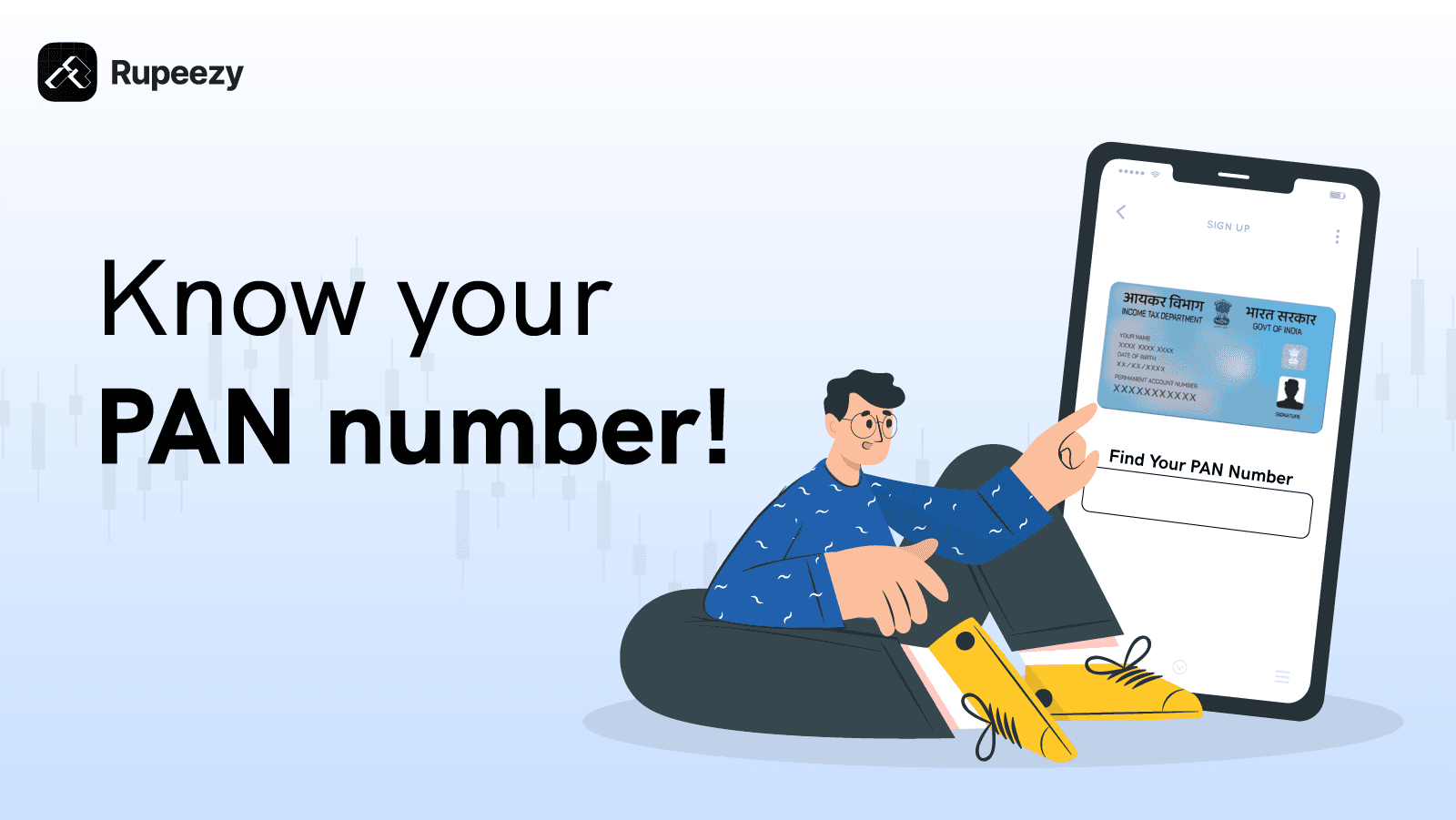What is IMPS? Features, Charges, Pros and Cons


00:00 / 00:00
Have you ever thought of making payments through an application from any place, anytime? The finance industry has been evolving over the years, leveraging technology to make banking smarter and more accessible. Among the various methods of payment, IMPS stands out, enabling users to access money and transfer funds at their fingertips. Whether it's a late-night emergency or a quick bill split, IMPS allows instant money transfers without delays. In this article, we will explore the IMPS full form, what is IMPS, its charges, limits, and more, to understand how this real-time payment system works and why it matters.
What is IMPS?
IMPS full form stands for Immediate Payment Service. It is a real time electronic fund transfer service offering instant round-the-clock including holidays. It is accessible through multiple channels like the Internet, Mobile, ATM, branch, and SMS. It allows fund transfer within banks across India, which helps cut costs and is economical as well. Currently, there are 945 participating members under IMPS, including banks and prepaid payment instruments (PPIs).
Banks interested in offering IMPS must possess a valid banking or prepaid payment instrument license from the Reserve Bank of India (RBI) to participate in the IMPS Network.
How IMPS Works
After looking at the meaning of IMPS, we will understand how IMPS works in steps.
At first, the sender begins with an IMPS transaction using their respective bank’s mobile application, internet banking platform, or SMS.
The transaction request is routed to the National Payments Corporation of India (NPCI) through the IMPS Switch.
NPCI verifies the recipient’s account information and confirms the sender has sufficient balance, using directory services to forward the request to the recipient’s bank.
Once verified and confirmed, the NPCI sends an authorisation request to the sender's bank, signaling approval to proceed.
The sender’s bank debits the specified amount and records the transaction internally.
NPCI coordinates with the Reserve Bank of India (RBI) to clear and settle the transaction. The sender’s bank account is debited, and the recipient’s account is credited.
The recipient’s bank receives a credit confirmation from NPCI and deposits the amount into the recipient’s account.
Both sender and recipient receive SMS alerts confirming the successful IMPS transfer.
For example, let’s say you are in a hurry to send Rs. 5,000 to your friend. You open your bank’s mobile app, choose the IMPS option, and enter your friend’s account number, IFSC code, and the amount. After checking the details, you confirm the transaction using your MPIN or OTP.
Your bank then sends the request to the NPCI, checks if your friend’s account details are correct, and makes sure you have enough money in your account. Once everything is verified, NPCI gives a green signal to your bank to proceed with the transaction. Your bank debits Rs. 5,000 from your account and notes the transaction in its books. NPCI then works with the RBI to settle the payment between two banks. Your friend’s bank receives the money and credits Rs. 5,000 to his account. Finally, both you and your friend receive SMS messages confirming that the money has been successfully transferred. All of these happen within seconds.
Features of IMPS
After looking at the IMPS mechanism, let’s look at some notable features of IMPS:
Real-Time Transfers: IMPS lets you send and receive funds instantly. The fund reaches the recipient’s bank account within seconds, even on weekends and holidays. The banks keep IMPS running all the time. You can make transactions anytime during the day or night.
Multiple Access Channels: You can use IMPS through mobile banking, internet banking, SMS, or even an ATM. It works across different platforms based on your convenience, making it an easier transfer method for the user.
Safe and Secure: Banks use secure systems and verification steps like MPIN or OTP while initiating a transaction, so your funds are protected during fund transfers through IMPS.
Acceptance: Almost all major banks in India support IMPS, so you don’t have to worry about the recipient’s bank being compatible.
Regulatory Oversight: IMPS is managed by NPCI, which is under RBI oversight and ensures trust and compliance.
Instant Confirmation: Both sender and receiver get immediate transaction alerts.
Transfer Limit: IMPS transactions allow transfers up to Rs. 5 lakh per day, making it an optimal choice for payments suitable for business transactions, emergency expenses, school fees, and others.
Advantages of IMPS
As we looked at the features of IMPS, now we will look at some of the Advantages of IMPS:
Instant Transfers: IMPS credits the recipient’s account in real time as soon as the transaction is made.
24x7 Availability: You can send money any time during the day or night, which includes weekends and public holidays.
High Daily Limit: Customers can transfer up to Rs. 5 lakh per day, making it suitable for both personal and business transactions.
Strong Security: IMPS uses OTP authentication and encrypted communication to safeguard your transactions.
Various Transfer Modes: IMPS supports transactions through mobile banking, internet banking, ATMs, and SMS-based services.
International Remittance Support: IMPS allows overseas remittances into Indian accounts via Foreign Inward Remittances (FIR). It is conducted through banking channels and other international money transfer services partnered with Indian banks.
Transaction Charges: The charges related to transactions are minimal when compared to other methods of payment, like RTGS. Some public and private banks don't charge for IMPS transactions.
Versatility: IMPS can be used for many purposes, for individuals and business-related transactions such as fund transfers, bill payments, mobile recharging, electricity and water bill payments, and others.
Limitations of IMPS
Despite its advantages, IMPS has some limitations too:
Daily Transfer Limits: The transfers are limited to Rs. 5 lakh per day and act as a barrier for high-value transactions like business payments or property-related transfers.
Charges: Banks may charge small fees for using the IMPS feature. These charges vary across banks and depend on the transaction amount, unlike UPI (Unified Payments Interface), which is often free.
Availability: Some small or regional banks may not support the facility as they are not IMPS-enabled. It might restrict users, especially in rural areas.
Internet Connectivity and Mobile Access: To use IMPS through an app or website, you need a constant internet connection or a smartphone. This can limit its use for people without digital access or tech knowledge.
No Scheduled Transfers: IMPS only supports immediate transfers. You can’t schedule payments for a future date, which can be inconvenient for managing regular bills or EMIs.
Dependent on Bank Timings to Resolve Issues: Although IMPS works 24x7, failed or incorrect transactions depend on your bank’s support hours, which usually follow regular working hours.
Limited International Use: You can’t use the IMPS facility to send money to accounts outside India. It only works for domestic transfers between Indian bank accounts.
Service Tax: These charges are attributed to the transaction charges imposed by the respective banks. The tax rate is mostly 18% Goods and Services Tax (GST).
IMPS Transaction Charges
Here, we will look at some of the financial institutions' minimum and maximum transaction charges. Below is a summary of IMPS charges across various institutions.
Bank Name | Minimum IMPS Charges (Excluding GST) | Maximum IMPS Charges (Excluding GST) |
ICICI Bank | Rs. 2.5 | Rs. 15 |
HDFC Bank | Rs. 3.50 | Rs. 15 |
Bank of Baroda | Rs. 2.5 | Rs. 25 |
State Bank of India | Nil (up to Rs. 1,000) | Rs. 20 |
RBL Bank | Rs. 5 | Rs. 15 |
Canara Bank | Nil (up to Rs. 1,000) | Rs. 20 |
Axis Bank | Rs. 2.5 | Rs. 10 |
Indian Overseas Bank | Rs. 2.5 | Rs. 15 |
Union Bank | Rs. 5 | Rs. 15 |
Kotak Bank | Rs. 2.5 | Rs. 15 |
IndusInd Bank | Rs. 2.50 | Rs. 15 |
Punjab and National Bank | Nil (up to Rs. 1,000) | Rs. 12 |
Central Bank of India | Rs. 3.00 | Rs. 20 |
Bandhan Bank | Rs. 5 | Rs. 15 |
Note: Charges are subject to changes, and consult your bank for the latest available information.
Steps to Transfer Money Using IMPS
After going through the transaction charges of IMPS, we will look at the steps to transfer money using IMPS through various channels.
Internet or Mobile Banking
This method is easier and ensures accuracy before transferring funds through IMPS. Below steps mentioned below can vary for each bank. Although most of the steps are similar. With the use of the Internet and mobile banking, you can transfer funds through IMPS, and here are as follows:
Log in to your bank account through mobile or internet banking method using your User ID and password.
Select the beneficiary from your saved list. If the beneficiary has not been added yet, then add their bank details, including the bank’s IFSC code, account number, branch name, etc.
Once added, the beneficiary will be saved for future IMPS transfers.
Enter the transfer amount once the beneficiary is selected.
Review thoroughly and verify that the entered details are correct to ensure the funds are transferred to the right person or entity.
Click on ‘Send Now’ or a similar option to initiate the transfer.
Confirm the payment by clicking the final ‘Send’ or ‘Confirm’ button.
Mobile Number and MMID
You can transfer the funds using the mobile number and MMID. You need a mobile number registered with a bank with which you operate your account. If not registered, you can visit your nearest bank branch and get it finished. After registering your mobile number with the bank, they provide a 7-digit MMID (Mobile Money Identifier) number, which is essential to start transacting through IMPS. Below are the steps, which are as follows:
Log in to your mobile banking app using your User ID and password.
Go to the 'Fund Transfer' section and select the IMPS option.
Enter the beneficiary’s details, which include their bank account number, registered mobile number, and MMID code.
Verify the details to ensure accuracy, and then enter your MPIN or the OTP (one-time password) sent to your mobile via SMS.
After completing the transaction, you will receive an SMS confirmation from the bank. The beneficiary will also get an SMS showing that the money has been credited to their account.
SMS Banking
Banks have made IMPS money transfers even simpler by allowing the public to use IMPS transfers through SMS. Through your mobile number and MMID, you can send a message in the format that your bank provides to start the transaction. Most banks follow a format like this:
IMPS <Receiver’s Mobile Number> <Receiver’s 7-digit MMID> <Amount> <Your MPIN>
According to your respective banks, you can find it on their official websites. Once you send the message and the money is transferred, the bank will send you an SMS to confirm that the transaction is successful. This method is dependent on whether your mobile number is registered with the bank, or else the transaction might fail or be rejected.
ATM Services
Under this method, you can use ATMs for IMPS transfers, as it is a valid and secure way to send money. All you need is a debit card and the beneficiary’s necessary details for a transaction. We will look into the steps to initiate an IMPS transaction
Go to a nearby ATM and insert your debit card.
Select Language Preference
Enter your 6-digit PIN to authenticate.
Select the ‘Fund Transfer’ option from the menu.
Choose IMPS as your transfer method.
Enter the beneficiary’s details as displayed on the screen.
Enter the transfer amount, verify all details, and press ‘Confirm’ or ‘Send’ to complete the transaction.
Although it’s not very popular, IMPS through ATM is safe and can be a handy option if you have the required information.
Visiting a Bank Branch
The last option would be to visit the respective bank branch to initiate the transaction through filing an IMPS form. Here are the steps:
Visit your nearest bank branch where you hold an account.
Request an IMPS Form from the bank staff and fill the necessary details like beneficiary account number, IFSC, and Transfer Amount.
Submit the completed form to the bank and pay the required transaction fee to initiate a transaction.
The bank will process the IMPS transfer and provide a confirmation slip.
Differences between IMPS, NEFT and RTGS
Let us compare the differences between IMPS, NEFT, and RTGS, and here are as follows
Feature | IMPS (Immediate Payment Service) | NEFT (National Electronic Funds Transfer) | RTGS (Real-Time Gross Settlement) |
Speed | Instant or real-time payment | Payment within 2 hours (Batch-wise) | Payment within 30 minutes. |
Availability | 24/7, all days (including holidays) | 24/7, all days (including holidays) (From the Year 2020) | Available 24/7 (From the Year 2020) |
Minimum Amount | Re. 1 | Re. 1 | Rs. 2,00,000 |
Maximum Amount | Rs. 5 lakhs (varies by bank or application) | No fixed limit (depends on the bank) as per the RBI | No upper limit (depends on the bank) |
Settlement | Real-time settlement | Settled in batches every 30 minutes | Real-time, individual transaction basis |
Ideal For | Every day transfers, UPI alternative, and used for emergencies | Routine transfers like salary, bills, vendor payments (non-urgent payments) | High-value, urgent transfers (property or any corporate payments on a priority basis) |
Transaction Charges | Usually free or low (Rs. 2.5 to Rs. 25) | Usually free or low (Rs. 2.5 to Rs. 25) | May have a charge for large amounts (Rs. 24.50 to Rs. 49.50 or more) |
IMPS - Safety Things You Should Be Aware
While initiating transactions, we might face instances that can make us vulnerable to the risk of losing hard-earned money and personal details. So to safeguard those, you need to be vigilant in protecting your personal information by being aware of your actions, which are:
Never share your debit card details, like card number, expiry date, or CVV, with anyone.
Keep OTPs confidential; do not disclose them to anyone.
Avoid forwarding banking-related SMS messages to unknown contacts.
Keep your internet or mobile banking passwords private and never share them.
Conclusion
IMPS has revolutionized how India transacts, while offering instant, round-the-clock fund transfers through secured digital channels. With support from major banks and access through mobile, internet, ATM, and SMS, it has helped individuals and businesses to initiate transactions with ease. While the Rs. 5 lakh limit and minimal charges make it ideal for most use cases, users must remain vigilant about security and avoid sharing sensitive data. As India progresses toward a cashless economy, IMPS remains a key pillar in making digital payments seamless and accessible.
FAQs
Q. Can we do IMPS immediately?
Yes, IMPS enables instant fund transfers 24x7, including holidays. The recipient gets the money within seconds.
Q. What is Quick Pay IMPS?
Quick Pay IMPS lets you send money instantly without adding a beneficiary, using the recipient’s mobile number and MMID or account details, with certain transfer limits based on the respective bank.
Q. Is IMPS better than NEFT?
IMPS is faster (instant transfer, available 24/7). NEFT transfers happen in batches and can take a bit longer. Choose based on how quickly you need the money sent.
Q. Is IMPS transfer free?
Not always. Some banks charge a small fee depending on the amount, while others offer it free, especially for online transfers.
Q. What is the limit of IMPS?
You can usually send up to Rs.5 lakh per transaction, but your specific bank might have a different limit.
Check Out These Related Articles |
The content on this blog is for educational purposes only and should not be considered investment advice. While we strive for accuracy, some information may contain errors or delays in updates.
Mentions of stocks or investment products are solely for informational purposes and do not constitute recommendations. Investors should conduct their own research before making any decisions.
Investing in financial markets are subject to market risks, and past performance does not guarantee future results. It is advisable to consult a qualified financial professional, review official documents, and verify information independently before making investment decisions.

All Category










